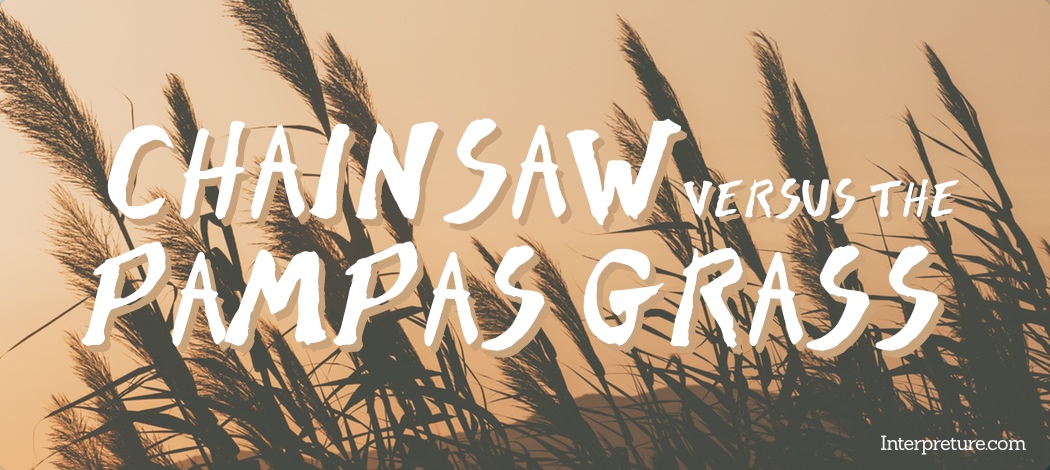‘Ode on a Grayson Perry Urn’ by Tim Turnbull considers modern society through an allusion to, and modern interpretation of, a classic Romantic poem by John Keats. Turnbull is an English ‘performance poet’ meaning that his poetry is designed to be read aloud as a performance piece, and is particularly interested in satire related to post-modern culture as shown in this poem. Various links to other artists and creators within this piece make it particularly interesting to consider due to the various connotations and viewpoints that can be analysed.
This poem is part of the set of prescribed poems that could be included in the Edexcel English Literature exam, meaning that it is important to study, understand and revise this poem. Click here to see all the prescribed poems from the ‘Poems of the Decade’ collection.

Interpreture gives ‘Ode on a Grayson Perry Urn’ a difficulty rating of 4, meaning that it is deemed to be a relatively difficult poem. All aspects of this poem are deemed to be somewhat difficult, with the meaning perhaps hard to initially understand and the poem as a whole made more difficult by the links to Keats’ ‘Ode on a Grecian Urn’. That said, the strong links between the two poems offer a wide variety of interpretations and potential analysis, particularly in the juxtaposition between modern ideas and a Romantic-based structure.
‘Ode on a Grayson Perry Urn’
The title of this poem is very interesting because of the various links and ideas that it gives a reader before they even look at the actual poem. Firstly, it would be seen as an allusion to John Keats’ famous Romantic poem ‘Ode on a Grecian Urn’ (coincidentally prescribed for the A Level Romantics topic) which considers the way that an urn depicts lives and ideas ‘frozen’ in time as part of Keats’ interest in being remembered after his death. As such, Turnbull can be seen as paying homage to this classic poem by creating a modern version designed to capture the mood of modern society. This is emphasised by the link to Grayson Perry, a Turner Prize winning artist known for his ceramic vases which depict modern scenes that are juxtaposed with the classical nature of the vase. However, while this title would be very effective for individuals that are aware of one or both of these important references, other readers who are not may find this confusing.

Poem Structure
The structure of ‘Ode on a Grayson Perry Urn’ conforms to the same layout as ‘Ode on a Grecian Urn’ in that it has five stanzas each made up of ten lines. This would make it even more recognisable as being inspired by Keats’ work, and also can be seen as creating a link to the past through the structure, which in turn enables greater consideration of the present through language techniques and choices. The ‘traditional’ rigid stanza structure may be seen by some readers as effectively juxtaposing old and new ideas, and could be particularly effective at indicating a traditional poem, when in fact the content is very contemporary.
Another link to ‘Ode on a Grecian Urn’ is that the poem shares a very similar rhyme scheme. All stanzas have an initial ABAB pattern, with the first three then continuing to CDEDCE and the last two to CDECDE. It is important to note that while Turnbull uses the same rhyme structure as Keats, the inclusion in each stanza of the poem is slightly different. Whereas Keats uses a Miltonic sestet (with the first and fifth stanzas ending in CDEDCE, the second stanza CDECED, and third and fourth stanzas CDECDE), Turnbull instead uses a more simple pattern with the first three stanzas matching, followed by the last two stanzas matching. Readers who are aware of this difference may interpret it as a representation of the changes in society over time, and this different rhythm used to show how a metaphorical ‘rhythm of society’ may have developed. Alternatively, readers who are not aware of these changes and would consider the poem more at face value would likely understand this relatively complex rhyme scheme as showing the complex and diverse society of today.
A mix of both enjambment and end-stopped lines adds an inconsistent element to the otherwise predictable structure, helping to add a greater sense of diversity and freedom to the sound of the poem. It can also be seen as helping to make the poem feel as if it is progressing faster, perhaps reflecting the perceived faster pace of life in modern society and the speed of communication and connection between individuals. The pace of the poem is important to consider because of the way in which it impacts a reader’s ability to fully take in all aspects of the poem, and it also becomes more challenging to appreciate the structure, therefore encouraging a reader to go through the poem multiple times.
Poetic Techniques
Opening the poem which speech, in particular something as friendly as “Hello!” may be surprising to a reader, and immediately sets the tone of the poem as being less serious, more fun and definitely friendly and approachable. The exclamations and questioning as part of this initial description would be very effective at making the poem feel more inclusive, which is important for the poem as it discusses a range of aspects of modern society so openly. In addition, it sets the tone of the poem to be quite informal, which is important for some subjects raised and the overall semantic field.
The semantic field of the poem is very much based around words related to stereotypical inner city and urban culture, with examples such as “estates” Daily Express” “children” “motorways” and even references to “Calvins” and “donut Os” – but this is juxtaposed against more traditional words (such as “louts” “gaudy evocation” and “kitschy”) that aren’t commonly used among younger generations, which creates a sense of transition. Some readers may interpret this as a satirical view on a lack of understanding between generations, such as the words that they use and the activities they do, which in turn could be seen as recognising the way in which society has shifted and changed since ‘Ode on a Grecian Urn’ was written.
Similarly, the contrast of the ideas present in the semantic field against ideas of “pensioners and parents” can be seen as creating a sense of inter-generational and inter-class contrast, emphasising the transition between these different elements of society. This can be interpreted as generating a consideration for perspective, which is an idea that is explored further in the final stanza of the poem as a more considerate tone is developed.
Important Lines
“house imported from the continent”
The poem refers to the electronic genre of music called House which developed in the 1980s in the United States, with the idea of it being “imported” from different locations demonstrating how geographical distance has largely been removed thanks to the ease of travel and communication. The line goes on to link “UK garage” so as to demonstrate the diversity of modern culture. It could also be interpreted as having a double meaning and be referring to the idea that households are increasingly diverse with origins from around the world.
“pumped on youth and ecstasy”
The informal adjective “pumped” helps to emphasise the semantic field of the poem and further link to the youthful aspects being described. The use of “ecstasy” is interesting because it acts as a ‘gateway’ between the old words and language and modern language, switching between meaning happiness or a type of recreational drug. This is a great demonstration of the varying semantic fields and different juxtapositions in ‘Ode on a Grayson Perry Urn’.
“when all context is lost”
The poem’s final stanza returns to consideration of the urn itself rather than what it depicts, with the narrator focussing how future generations may interpret and understand the piece of art. This can be seen as linking back to a literal ‘Grecian Urn’ and how today we have to guess about what these ancient pieces are communicating, just as future generations may in the future. It is particularly interesting to consider the idea of “context” being “lost” – some readers may interpret this as Turnbull contemplating whether the negative behaviour in the poem will one day be looked on positively.
‘Ode on a Grayson Perry Urn’ Key Themes
- Society and Culture: A core aspect of ‘Ode on a Grayson Perry Urn’ is the consideration of modern society, and how this may be perceived differently and potentially more positively in the future than it is today. Turnbull also suggests the different social and cultural divisions which exist, such as class differences or generational gaps.
- Past and Present: The allusion to ‘Ode on a Grecian Urn’ adds an aspect of history and consideration of the past in comparison to the present, with the poem looking at the idea of society across time and how it is represented in art.
- Identity: As part of the representation of society, the identity of large portions of the population is considered so as to provide strong and realistic links. This would help a reader feel more connected to the poem, having more empathy and also more likely to consider the ideas being proposed such as how future generations may look back on the present.
Quick Focus Questions
- In what ways could the pace and tone of the poem influence different types of readers? Consider age, background, etc.
- How could the allusion to Keats‘ poem make this piece more or less effective for different readers?
- What questions could the poem be interpreted as asking a reader, and what impact could this have on their interpretation of the poem?
While ‘Ode on a Grayson Perry Urn’ can be a challenging poem for many students, there is a huge range of opportunity for analysis, and the links to such an important Romantic poem make this a really interesting one to study; not just as part of the exam course, but also for interest through how it draws inspiration from across English Literature. The poem would work very well as a comparison to other poems that have the society and culture theme, such as ‘Please Hold’, ‘Look We Have Coming to Dover!’ and ‘History’.







6 Comments
Hello there,
What would you say would be the didactic message and POV of this poem?
Hi Kieron, thanks for your question – it’s a really interesting one! I think the end of the poem is very significant for understanding a potential message, particularly the very last line, when the narrator considers how future generations will look back on current society. By encouraging a reader to think about future generations, Turnbull also encourages reflection on how our society may look back on previous cultures, never truly knowing how they were because we have never been able to actually experience them. As such, the things some may criticise today could be looked on positively in the future. In many ways I feel like the poem is aiming more to encourage personal and societal reflections on this concept, rather than trying to encourage one particular viewpoint. You may be interested in having a quick read of Ode on a Grecian Urn by Keats, if you haven’t already, as it is what this poem is based on and the two have strong links. Hope this helps!
This site is amazing!!!! It really helps with revision, much appreciated. Thank You.
Really helped me with revision! Thank you
Absolutely crystal clear analysis! With the prevalence of history in our society, I believe what you have highlighted in this poem reveals a strong argument for the notion of change – Thank You for sharing your material!
I was wondering if anyone knows what age Turnbull was when he wrote this poem, I cant seem to find it. Many thanks